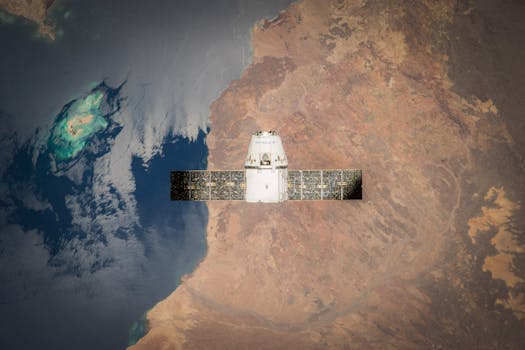
Starlink is a satellite constellation developed by SpaceX to provide high-speed, low-latency internet connectivity across the globe. With the Focus Keyword: Starlink at the forefront of this innovation, the project aims to bridge the digital divide by offering reliable and fast internet access to underserved communities worldwide. The constellation consists of thousands of small satellites in low Earth orbit, working together to create a network that can provide internet services to anyone, anywhere in the world.
The concept of Starlink was first announced by SpaceX in 2015, with the goal of creating a constellation of satellites that could provide global internet coverage. The project has been in development since then, with numerous launches of Starlink satellites into orbit. Each satellite is equipped with advanced technology, including Hall effect thrusters for propulsion and a suite of antennas to communicate with users on the ground. The satellites are designed to be highly efficient, with a lifespan of approximately five years, after which they will be deorbited and replaced with new satellites.
One of the key features of Starlink is its ability to provide high-speed internet access with low latency. The satellites use advanced beamforming and phased array technologies to direct internet beams to specific areas on the ground, allowing for fast and reliable connectivity. The system is designed to support a wide range of applications, from basic web browsing to more demanding uses like online gaming and video streaming. With Starlink, users can expect to see significant improvements in their internet speeds, with download speeds of up to 1 Gbps and latency as low as 20 ms.
The potential impact of Starlink on global connectivity cannot be overstated. According to the International Telecommunication Union (ITU), approximately 3.8 billion people worldwide lack access to the internet, with many of these individuals living in rural or underserved communities. Starlink has the potential to change this, providing a cost-effective and reliable means of accessing the internet for people in even the most remote areas. This, in turn, could have a significant impact on economic development, education, and healthcare outcomes, as well as other areas of life that are increasingly dependent on internet access.
Despite the many benefits of Starlink, there are also challenges and concerns associated with the project. One of the main issues is the potential for space debris, as the large number of satellites in the constellation could contribute to the growing problem of junk in Earth’s orbit. There are also concerns about the impact of Starlink on the night sky, with the bright satellites potentially interfering with astronomical observations. Additionally, some have raised concerns about the cost of the service, with the initial pricing for Starlink equipment and subscription fees being out of reach for many potential users.
In terms of competition, Starlink is not the only satellite internet constellation in development. Other companies, such as OneWeb and Amazon’s Kuiper Systems, are also working on similar projects, which could potentially compete with Starlink for market share. However, with its early mover advantage and the significant resources of SpaceX behind it, Starlink is well-positioned to be a major player in the emerging satellite internet market.
The development and launch of Starlink have been marked by several significant milestones. In May 2019, SpaceX launched the first batch of 60 Starlink satellites into orbit, marking the beginning of the constellation’s deployment. Since then, numerous additional launches have taken place, with the total number of Starlink satellites in orbit now exceeding 1,000. The company has also begun to roll out its internet service to beta testers, with the first commercial services expected to be available in the near future.
As the Starlink constellation continues to grow and expand, it is likely to have a profound impact on the way we access and use the internet. With its potential to provide high-speed, low-latency connectivity to anyone, anywhere in the world, Starlink is poised to revolutionize the way we live, work, and communicate. Whether you are a rural resident looking for reliable internet access, a business seeking to expand its reach, or simply an individual looking to stay connected on the go, Starlink is an exciting development that is worth watching in the years to come.
With the continued development and expansion of the Starlink constellation, it will be interesting to see how this technology evolves and improves over time. As more satellites are launched and the network becomes more extensive, we can expect to see even faster speeds and lower latency, making it an attractive option for an increasing number of users. Furthermore, the impact of Starlink on the environment and the night sky will be closely monitored, and it is crucial that SpaceX and other stakeholders take steps to mitigate any negative effects.
In conclusion, Starlink is a groundbreaking project that has the potential to transform the way we access the internet. With its cutting-edge technology, extensive coverage, and commitment to providing fast and reliable connectivity, Starlink is an exciting development that holds much promise for the future of global communication. As we look to the future, it will be essential to continue monitoring the progress of Starlink and its impact on the world, and to support initiatives that promote equal access to the internet for all.




